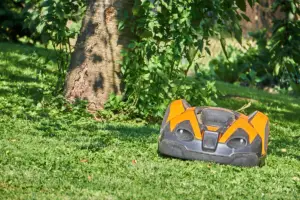Rats are a common problem that many homeowners face, particularly those who live in urban or suburban areas.
These rodents are known to carry diseases and can cause significant damage to property.
Getting rid of rats outside can be a challenging task, but it is essential to keep your home and yard safe and healthy.
There are several ways to get rid of rats outside, and it’s important to choose the method that works best for your situation.
One effective way to control rats is by eliminating their food sources. Rats are attracted to garbage, compost, and pet food, so it’s crucial to keep these items securely stored and dispose of them properly.
Additionally, trimming tall grass and overgrown plants can help eliminate potential hiding spots for rats.
If you have fruit trees or vegetable gardens, it’s important to pick up fallen fruit or vegetables promptly.

Table of Contents
Identifying the Problem
When it comes to getting rid of rats outside, the first step is to identify the problem.
Rats can cause a lot of damage to your property and pose a health risk, so it’s important to take action as soon as possible.
In this section, we will discuss how to identify a rat infestation and common rat entry points.
Signs of Rat Infestation
The first sign of a rat infestation is usually the presence of droppings. Rat droppings are small, dark, and pellet-shaped.
You may also notice gnaw marks on wood, plastic, or other materials. Rats have a constant need to gnaw to keep their teeth from growing too long.
If you see gnaw marks on wires or cables, this could be a serious fire hazard.
Another sign of a rat infestation is the presence of nests. Rats will build nests in warm, hidden places such as attics, basements, and crawl spaces.
If you notice any shredded paper, fabric, or insulation, this could be a sign of a rat nest.
Finally, you may hear scratching or scurrying sounds coming from walls, ceilings, or floors. Rats are active at night, so you may hear these sounds when you’re trying to sleep.
Common Rat Entry Points
Rats can enter your home through small cracks and openings. Here are some common rat entry points to look for:
| Entry Point | Description |
|---|---|
| Roof | Rats can climb trees and jump onto your roof. Look for any overhanging branches or vines that could provide access to your roof. |
| Vents | Rats can enter your home through vents that are not properly screened. Make sure all vents are covered with wire mesh. |
| Doors and Windows | Rats can squeeze through small gaps around doors and windows. Make sure all doors and windows are properly sealed. |
| Pipes | Rats can enter your home through gaps around pipes. Seal any gaps with caulking or steel wool. |
| Foundation | Rats can enter your home through gaps in the foundation. Seal any gaps with cement or mortar. |
By identifying the signs of a rat infestation and common entry points, you can take the necessary steps to get rid of rats outside and prevent them from coming back.
Prevention Measures
To prevent rats from infesting your yard, it is important to take preventative measures. The following sub-sections provide effective methods to keep rats away from your property.
Sealing Entry Points
Rats can enter your yard through small gaps and cracks in walls, foundations, and other structures.
Therefore, it is important to seal any entry points that rats can use to gain access to your yard. Use caulk or wire mesh to seal cracks and holes in walls, foundations, and roofs.
Make sure that doors and windows are tightly sealed, and consider installing door sweeps to prevent rats from entering your home.
Removing Food Sources
Rats are attracted to food sources, so it is important to remove any potential food sources from your yard.
Keep garbage bins tightly sealed, and store them away from your home. Do not leave pet food outside, and clean up any spilled birdseed or other food sources.
If you have fruit trees, pick up fallen fruit regularly.
Trimming Vegetation
Rats can use overgrown vegetation as hiding places, so it is important to keep your yard well-maintained.
Trim any tall grass and overgrown plants regularly, and keep your plants at least two feet away from your home.
Remove any piles of debris or clutter from your yard, as rats can use these as hiding places.
Using Rat Repellents
There are several rat repellents available that can help keep rats away from your yard. Some popular options include peppermint oil, mothballs, and ultrasonic devices.
However, it is important to note that these repellents may not be effective in all situations, and may require regular reapplication to maintain their effectiveness.
By following these preventative measures, you can help keep rats away from your yard and prevent infestations.
Trapping and Removal
Trapping is one of the most effective ways to get rid of rats outside. It involves setting traps and baiting them with food that rats love.
Once the rats are trapped, they can be disposed of safely and humanely. Here are the steps to trap and remove rats outside.
Choosing the Right Trap
There are several types of traps available for catching rats outside. The most common types are snap traps and live traps.
Snap traps are designed to kill rats instantly, while live traps allow you to catch them alive and release them elsewhere.
When choosing a trap, consider the size of the rat and the location where the trap will be placed.
Baiting the Trap
The right bait can make all the difference when it comes to trapping rats outside. Some of the best baits for rats include peanut butter, bacon, and dried fruit.
When baiting the trap, be sure to place the bait in the middle of the trap, so that the rat has to step on the trigger to get to it.
Checking and Disposing of Trapped Rats
It’s important to check your traps regularly to see if you’ve caught any rats. If you have, wear gloves and dispose of the rat in a plastic bag.
If you’re using a live trap, release the rat at least a mile away from your home, so that it doesn’t find its way back.
Be sure to clean and disinfect the trap after each use to prevent the spread of disease.
Trapping and removal is a safe and effective way to get rid of rats outside. By choosing the right trap, baiting it properly, and disposing of trapped rats safely, you can keep your home and yard rat-free.
Professional Help
Sometimes, despite your best efforts, rats can still be a problem. In these cases, it may be necessary to call in the professionals.
When to Call a Professional Exterminator
If you have tried various methods to get rid of rats outside and they have not been successful, it may be time to call a professional exterminator.
Additionally, if you have a large infestation, it may be too difficult to handle on your own.
A professional exterminator has the experience and equipment necessary to effectively eliminate the problem.
What to Expect from Professional Rat Removal Services
When you hire a professional rat removal service, they will typically begin by conducting a thorough inspection of your property to identify the source of the problem.
They will then develop a customized plan to eliminate the rats and prevent them from returning.
Some common methods used by professional rat removal services include:
- Trapping and removal: Professional exterminators will use humane traps to capture rats and then remove them from your property.
- Poison bait: Exterminators may use poison bait to eliminate rats. However, this method can be dangerous if not used properly and may not be the best option if you have pets or young children.
- Exclusion: Professionals will identify and seal any entry points that rats may be using to enter your property.
- Sanitation: Rat removal services will also provide recommendations for sanitation and maintenance practices to prevent future infestations.
Overall, hiring a professional rat removal service can be a more effective and safer option than trying to handle the problem on your own.
It is important to choose a reputable company with experience in rat removal to ensure the job is done correctly.
Conclusion
In conclusion, getting rid of rats outside requires a combination of preventive measures, proper sanitation, and targeted extermination techniques.
By eliminating potential food and shelter sources, sealing entry points, and employing humane trapping or professional pest control services when necessary, you can effectively mitigate rat infestations and create a healthier, rat-free environment.
Remember, taking swift action and implementing a comprehensive approach is crucial to successfully eradicating rats and preventing future problems.
- How to Build a Planter Box for Bamboo: A Step-by-Step Guide

- Can Robotic Lawnmowers Handle Steep Slopes?

- Do You Need a Specific Lawn for a Robotic Lawnmower? Expert Advice

- Are Robotic Lawnmowers Safe for Pets and Children? Safety Features of Robotic Lawnmowers

- Why Use Robotic Lawnmowers? Advantages of Using a Robotic Lawnmower

- Is the GARDENA SILENO City 300 Cordless or Corded? A Clear Answer














